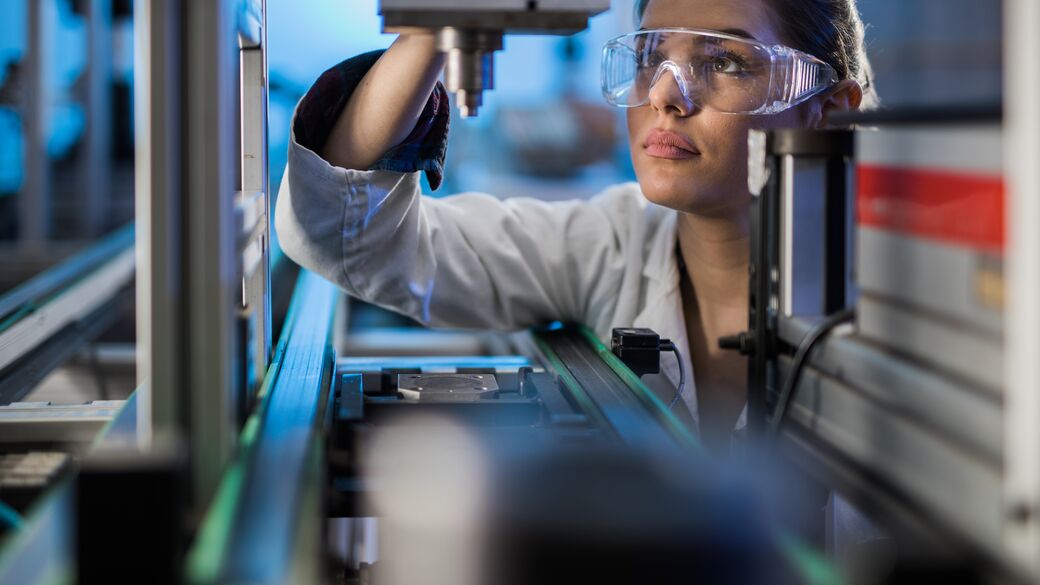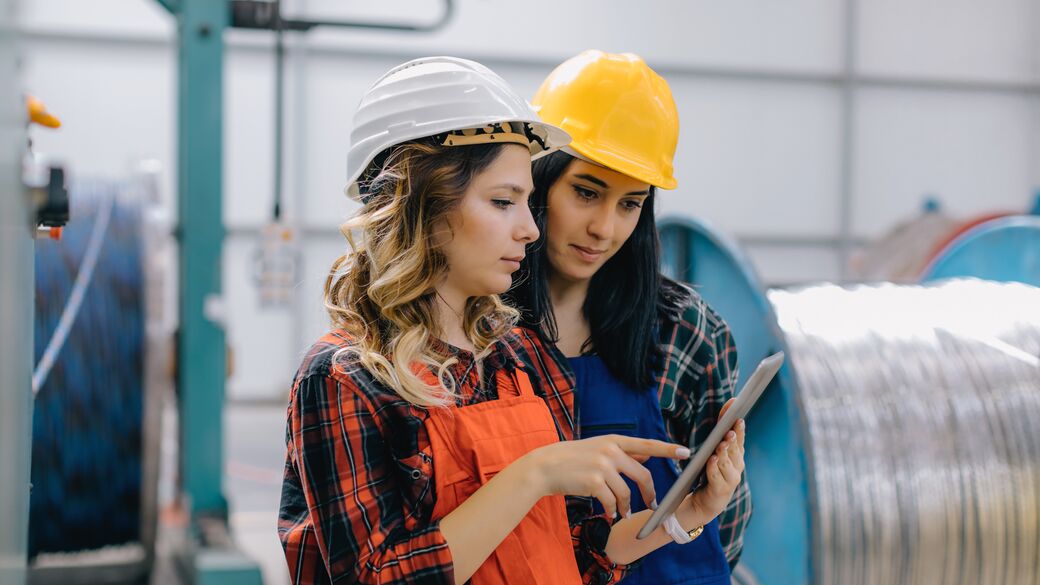We now live in a world where a sustainable Belgian construction company can print an entire two-story home with a 3D printer. Where a team of University of Texas scientists encoded The Wizard of Oz into a double strand of DNA. And where the first humanoid robot was cast in a Hollywood film.
We're a world in transition. We're moving from the fourth industrial revolution (4IR) to the fifth while simultaneously occupying all the stages of progress and innovation in between.
History defines advancements in the industrial age as revolutions, starting with the first—steam and mechanical production. The second ushered in electricity and mass production, while the third brought electronics, IT, and automated production.
In today's 4IR, rapid advancements in artificial intelligence and machine learning, 3D printing, gene editing, and nanotechnology are impacting how we manufacture, distribute, and innovate in retail. Klaus Schwab, executive chairman of the World Economic Forum, writes that we are implementing and iterating simultaneously, creating new breakthroughs sometimes faster than we can apply them. “It's the fusion of these technologies and their interaction across the physical, digital, and biological domains that make the fourth industrial revolution fundamentally different from previous revolutions," writes Schwab in his book, The Fourth Industrial Revolution.
4IR innovations are expected to generate more than $3.7 trillion in value by 2025, according to ongoing research by the World Economic Forum and McKinsey. But some businesses and industries are slower than others to adopt the technology. In manufacturing, the study found less than a third of manufacturers are “actively rolling out fourth industrial revolution technologies at scale." Researchers point to pilot purgatory, a holding pattern where technology rests in a permanent trial stage, growth stunted by a company's inability to push towards the scale-up phase. It's something retailers and distributors are experiencing as well.
But across these industries, early adopters are embracing 4IR technologies with an eye already toward 5IR—and it's having a revolutionary impact on businesses and society.
Automation Leads to Autonomy
Automation fits into three categories:
- Basic robotic process automation (RPA) uses technology that can, for example, automate repetitive processes like cutting and pasting information from one system to another.
- Enhanced process automation, which uses technology like Natural Language Processing capable of interpreting text and information in emails and social media content.
- Autonomic or cognitive automation uses machine learning software to mimic the way we think and learn.
Clothing retailer The North Face leverages IBM's Watson artificial intelligence to power its shopping assistant. You can speak to the technology directly on the phone and it will engage you to try and figure out what you're looking for. The AI learns over time and gets better at understanding what customers want, even understanding synonyms and making highly personalized suggestions.
In manufacturing, companies like GE and Merck have adopted RPA to automate back-office elements. The logistical next step brings RPA to the manufacturing floor. Imagine a not-so-distant future when Internet of Things (IoT) sensors on machines help to identify—and perform—predictive maintenance.
One of China's largest eCommerce retailers has adopted RPA efficiency, with automated warehouses that can reportedly process up to 20,000 packages in an hour. JD.com uses robotic unloading systems, barcode scanning, automated vans, and drone deliveries to expedite its distribution.
Printing Out the Future
3D printing spent the last 20 years shedding the novelty factor and finding its way into production channels and retail environments including the Adidas AlphaEDGE 4D 3D-printed sneaker. And Gillette's Razor Maker platform allows customers to print razors unique to them. Also, a partnership between IKEA and 3D printer UNYQ allows people to scan themselves and have a 3D-printed chair seat unique to them.
During Covid-19, HP Inc. and partners began 3D printing face shield parts and hands-free door openers to help support essential health workers. The mobilization helps illustrate the versatility of 3D printers in everyday manufacturing processes.
As retailers look for ways to further personalize products for consumers, 3D printing technology makes it possible to invest in raw materials and create products right inside their stores. This effectively rewrites their supply chain and reduces inventory waste through small batch production.
From Practically Science Fiction to Practical
In the early 2000s, nanotechnology and gene editing were requisite plot points for science fiction films. More recently, developments like nanosensors—the tiny chips underpinning IoT—and CRISPR gene-editing technology are promising to bring these types of 4IR technology into a more practical mainstream.
Carbon nanotubes help manufacturers create stronger, more water-repellent and wrinkle-resistant textiles and products. Nanotechnology can be used to optimize adhesives and make furniture stain-proof. It can even be used to manufacture tennis balls that bounce longer. Nanosensors, meanwhile, can be used to track packaging as it moves through distribution channels and traces the origin of food.
4IR technology like CRISPR gene editing is still in its early stages, but already grocery retailers are looking at how it could potentially impact the products they sell. Scientists already created gene-edited crops like non-browning mushrooms and mildew-resistant grapes. These experiments are part of a wider effort to prevent spoilage, a challenge that could filter out the entire distribution supply chain and change the way food is delivered and sold.
Accelerated Revolution
In an op-ed for the Economist Intelligence Unit on how Covid-19 accelerated the 4IR, Sanjeev Khagram, an expert in global leadership and the data revolution, points out that the emergency made us more aware of our rapidly changing world. We rely on 21st-century technologies like artificial intelligence, IoT, drones, and 3D printing “to keep us healthy and to transform economies."
Systems that resisted change for decades are becoming living labs as a result of Covid-19. Retailers are experimenting with augmented technologies and virtual reality, robots are moving from factory floors to front-line response, and 3D printers are being used to manufacture masks en masse.
“The unprecedented context is simultaneously driving us to become far more reliant on breakthrough digital, biological, and physical technologies and far more inventive about how we can use these emerging technologies to create value in new ways," writes Khagram.
It could be one where retail floors have robots working alongside employees.
The effects of automation and artificial intelligence on the workforce and the nature of work itself are undeniable. A recent report from the International Organization for Economic Cooperation and Development (OECD) estimates that 14% of jobs in countries including the U.S., UK, Canada, and Japan are “highly automatable."
The key to offsetting the impact on society will be a combination of private sector "upskilling" programs to help retrain employees, and public policies that help support the next-generation workforce and labor market. But if Klaus Schwab's predictions about the fusion and interaction of technologies across “physical, digital, and biological domains" pan out, Industry 5.0 will see a drastically transformed workforce.
It could be one where retail floors have robots working alongside employees. Or where stores are contactless and touchless, relying on facial recognition AI and sensors to track purchases. We may live in a world where products are printed in-store or produced by voice activation and distributed by autonomous vehicles or drones. A world where manufacturing, distribution, and retail look and feel quite different.
Or perhaps it will be like the 4IR, flowing seamlessly into our day-to-day lives so that we hardly notice. Until we take a step back to look at how much our world really has changed in so little time.








